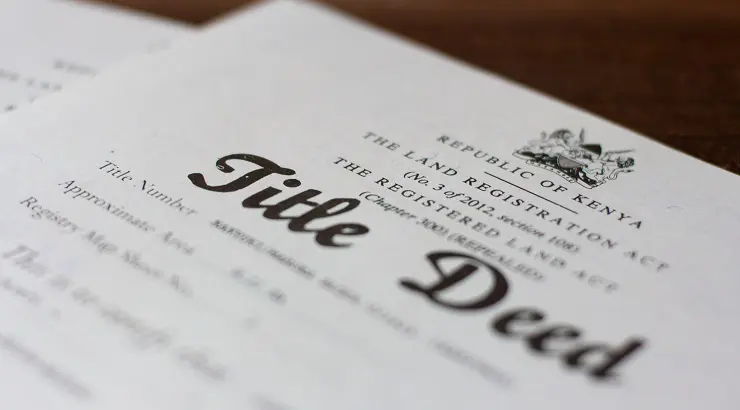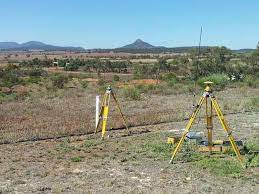Subdivide Land in Kenya
Learn how to subdivide land in Kenya — from the legal process and survey requirements to costs, approvals, and timelines. This complete guide explains every step, fees involved, and how to avoid common mistakes when partitioning your property.
Introduction
Subdividing land in Kenya allows property owners to divide a larger parcel into smaller plots for sale, inheritance, or development. The process involves several legal and technical steps, including surveys, approvals from county authorities, and registration with the Land Registry. Understanding the subdivision process ensures compliance with Kenyan land laws and helps you avoid costly delays. This guide explains how to subdivide land in Kenya, the cost breakdown, and what to expect at each stage.
Understanding the Land Subdivision Process in Kenya
Subdividing land in Kenya involves breaking down one registered parcel into multiple legal plots, each with its own title deed. It is commonly done to sell portions of land, distribute property among family members, or prepare land for housing projects. This process must follow Kenyan land laws under the Physical and Land Use Planning Act and the Land Registration Act.

Why Subdivision is Important
Subdivision helps maximise the land’s economic potential and ensures proper ownership distribution. Whether you are developing rental units or selling smaller parcels, legal subdivision prevents future disputes and increases property value. It also aligns with local development control regulations to ensure every new plot has access to infrastructure like roads and drainage.
When to Consider Subdividing Land
You should consider subdividing land in Kenya when you want to sell a section, gift family members, or use parts of the land for separate projects. It’s also useful for partnerships or joint ventures that require clear boundaries. Subdivision ensures each party’s interests are legally recognised through individual title deeds.
Legal Requirements for Land Subdivision in Kenya
Before subdivision begins, the land must meet legal conditions to ensure ownership rights are valid and the parcel is eligible for partition. The Ministry of Lands, the National Land Commission (NLC), and county governments oversee these legal aspects.
Proof of Ownership and Title Verification
You must have a valid title deed registered under your name. The land must also be free of disputes or caveats, and any encumbrances such as charges or loans should be cleared. This verification process ensures you have full rights to carry out the subdivision without legal interference.
Compliance with County Planning Regulations
Every county government in Kenya has zoning and land use rules that dictate how land can be subdivided. The subdivision plan must comply with these regulations, including minimum plot sizes, accessibility, and alignment with approved development plans. Failure to comply can lead to rejection of your application or penalties.

Steps in the Land Subdivision Process in Kenya
The land subdivision process involves several coordinated steps handled by a registered surveyor and approved by county authorities. Following the right order avoids unnecessary delays.
Step 1 – Hire a Licensed Surveyor
The first step is to engage a government-licensed land surveyor to assess your parcel and prepare a subdivision scheme plan. The surveyor ensures that the proposed plots meet legal and zoning standards, including access to roads and utilities. Their expertise is essential for ensuring accuracy and compliance.
Step 2 – Obtain County Government Approval
Once the surveyor prepares the plan, it must be submitted to the County Physical Planning Department for approval. County officials review it to ensure it aligns with local physical development policies. You’ll receive a planning consent letter or an official approval stamp before proceeding.
Step 3 – Survey and Beaconing
After approval, the surveyor physically visits the site to mark the boundaries of each new plot with beacons. This ensures all divisions are clearly identified on the ground. Accurate beaconing minimises boundary disputes and forms the basis for preparing new title deeds.
Step 4 – Registration and Title Deed Issuance
Finally, the approved survey plan and documents are lodged with the Ministry of Lands for registration. Each new parcel receives a unique title deed. At this point, you can legally sell or transfer ownership of the subdivided plots.

Cost of Subdividing Land in Kenya
The cost of subdivision varies depending on location, parcel size, number of plots, and county-specific fees. Typically, costs range between KSh 100,000 and KSh 300,000 for medium-sized plots.
Surveyor Fees and Professional Costs
Surveyor fees form a large portion of subdivision costs. They usually charge based on the number of plots and complexity of the work, often between KSh 30,000 and KSh 100,000. The cost covers site visits, plan preparation, and official survey submission.
County Approval and Planning Fees
County governments charge for planning approval and consent letters. These fees vary depending on the county and the land’s zoning type. Urban counties like Nairobi and Kiambu often have higher charges than rural ones.
Registration and Title Processing Costs
The final step includes registration fees and stamp duty costs. Title deed processing at the Lands Registry typically ranges from KSh 2,000 to KSh 5,000 per plot. It’s advisable to include miscellaneous costs for document copies, transport, and administrative expenses.
Common Challenges in Land Subdivision
While the process seems straightforward, many landowners face obstacles that delay completion. Understanding these challenges helps you prepare and avoid them.
Land Disputes and Boundary Issues
Land disputes often arise due to unclear ownership records or encroachment. Before subdivision, resolve any disagreements through mediation or court orders. Clear documentation avoids later legal battles that can delay or void your project.
Delays in County and Land Registry Approvals
Approval delays are common due to backlog or missing documentation. To avoid this, ensure all documents are complete and submitted through an authorised surveyor. Following up regularly with county offices helps speed up the process.
Inaccurate Survey Work
Incorrect survey data can cause overlaps or incorrect plot boundaries. Always hire an experienced, licensed surveyor who adheres to official mapping standards. This ensures your title deeds reflect the correct parcel sizes.

Tips for a Smooth Land Subdivision Process
Being proactive and well-prepared can help reduce time and costs during the subdivision process.
Work with Reputable Professionals
Choose surveyors, planners, and lawyers with verified licenses and positive client reviews. Experienced professionals help you navigate technical requirements efficiently. They also anticipate and address potential legal issues early.
Maintain Open Communication with Authorities
Keep in touch with your county physical planning office and the Ministry of Lands throughout the process. Regular follow-ups ensure your documents are processed on time. Building rapport with officials also helps when clarifying regulatory requirements.
Keep Proper Documentation and Receipts
Maintain copies of all receipts, approvals, and survey records. These documents serve as proof during registration and future reference. Organised records make property transfers easier once subdivision is complete.

How Long It Takes to Subdivide Land in Kenya
The duration of the subdivision process depends on factors like county workload, plot size, and document readiness.
Typical Timeframes
A standard subdivision process takes 2 to 6 months to complete. Counties with digitised land services tend to be faster, while those with manual systems experience delays. Engaging experienced professionals often reduces the overall timeline.
Approval delays, missing documents, or disputes can extend the process. Early verification of ownership and prompt communication with officials ensures smoother progress. Staying organised throughout the process helps avoid unnecessary setbacks.
Key Documents Needed for Subdivision
Having all documents ready helps you avoid rejections and repeat submissions.
Ownership and Identification Documents
You’ll need the original title deed, a copy of your national ID, and your KRA PIN. These documents confirm legal ownership and personal identification. For company-owned land, include the certificate of incorporation.
Survey Plans and County Approvals
Your surveyor will prepare subdivision plans, which must be stamped and approved by the county planning office. Attach approval letters, consent forms, and any zoning clearances. Ensure all documents are consistent with the parcel details.
Clearance Certificates and Application Forms
You’ll need a land rates clearance certificate and a completed subdivision application form. Some counties also require an affidavit affirming ownership and consent for subdivision. Presenting all documents in one package speeds up processing.
Conclusion
Subdividing land in Kenya requires careful planning, legal compliance, and professional guidance. The process—from hiring a licensed surveyor to obtaining approvals and registration—ensures that each new parcel has its own valid title deed. By following the right procedures, you can efficiently subdivide land in Kenya, avoid disputes, and maximise your property’s value. For best results, always consult professionals and adhere to county planning requirements.



